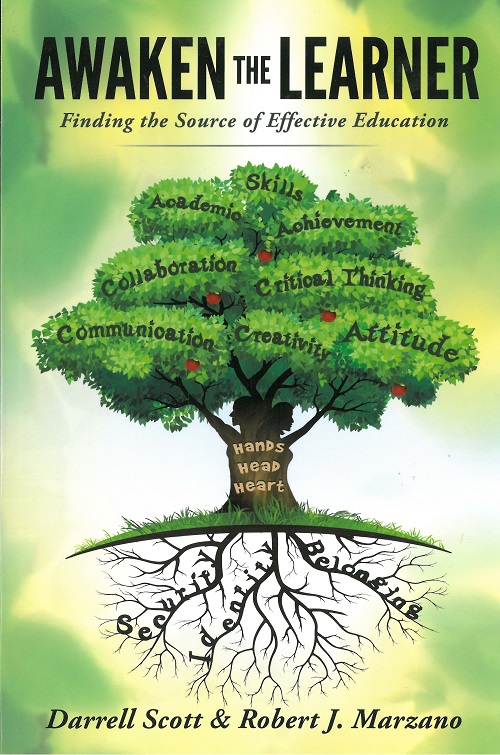The Reflective Principal: Collaborative Principles for Principals
By Robyn Conrad Hansen, Ed.d.
Principal, May/June 2015
Raising the Bar: Urban Oasis Yields Student Achievement
By Brad Rumble and Timothy G. Thomas
Principal, May/June 2015
Each autumn, the yellow-rumped warbler arrives on the campus of Leo Politi Elementary School in downtown Los Angeles. Throughout the winter, their clipped “snip, snip” is a part of campus life: tiny bursts of grey, white, and yellow flitting from the school’s coastal live oaks to California sycamores. By mid-spring they are gone.
Practitioner’s Corner: Tech Solutions for Classroom Management
By Shanna Rae
Principal, May/June 2015
It’s no secret that behavioral disruptions can hinder teaching and learning. My school, Billingsville Elementary School in Charlotte, North Carolina, is a neighborhood school that is one of the most impoverished schools in the Charlotte-Mecklenburg Schools district. In the past, we faced many behavior challenges. In fact, at one point, student behavior was so disruptive that administrators had difficulty conducting teachers’ classroom observations.
Parents & Schools: Engage Parents as Partners
By Beth Johnston
Principal, May/June 2015
As the principal of a large, growing elementary school (plus a parent of six and a grandma of 18), I know how powerful family engagement is in the process of educating students. At my school, Endeavour Elementary School in Kaysville, Utah, we strategically plan activities throughout the year to involve families. For instance, every Friday is Dads Day, where fathers organize students’ play at lunch recess, and once a year we invite grandparents to accompany their grandchild to school.
Best Practice: Modern Spaces for New Technology
By Sally Lindgren
Principal, May/June 2015
As digital learning, personalized learning, and 1:1 initiatives take hold in our schools, the question remains: How can we truly leverage technology to make an educational difference for our students? Teachers across the nation have attended numerous professional development sessions that promote the latest technologies, and there are more and more fantastic tools, devices, and resources available to classrooms. Yet, teaching and learning practice has (for the most part) stayed the same.
Comprehensive Support for Young English Learners
Strategies for language acquisition in the early grades.
By Karen N. Nemeth
Principal, May/June 2015
Social Media 3.0
Developing a connected mindset through intentional practice.
By Daniel Butler
Principal, May/June 2015
Social media is a tool that is only as powerful as the hand that holds it. Social media 3.0, however, is about mindset— believing in the importance of consistently differentiating communication and cultivating contagious, memorable messages. With relatively simple changes in the presentation and structure of information, principals can multiply their positive impact.
Build Tech Success With Students’ Help
Students take pride in helping teachers integrate technology in this California elementary school.
By Aaron Brengard
Principal, May/June 2015
Tech Tools
Flip Your Leadership
Flipped communication isn’t just for classrooms; teachers and parents can also benefit.
By Peter DeWitt
Principal, May/June 2015
Tech Tools
A Culture of Innovation
Two schools’ journeys toward implementing 1:1 computing.
By Stefani Pautz, Douglas Elmendorf, and Jennifer Mullenax.
Principal, May/June 2015
Tech Tools
Postscript: Keeping School a Safe Haven
By Gail Connelly
Principal, March/April 2015
On a recent school day, first-grader Jayce hid in the supply closet for 35 minutes, took his teacher’s cell phone to call 911, and then used a yardstick as a sword to clear everything off classroom tables while other students worked on a math lesson.
It's the Law: LGBT Students
By Perry A. Zirkel
Principal, March/April 2015
One issue that reflects changing societal values and public awareness is the meaning of diversity in terms of individuals who are lesbian, gay, bisexual, or transgender (LGBT). Gender identity may be of acute significance even for students in elementary or middle school. The reaction of others, including staff members and other students, may either accentuate or alleviate a student’s psychological struggle with this individually central issue.
Principal's Bookshelf: March/April 2015
 Awaken the Learner: Finding the Source of Effective Education.
Awaken the Learner: Finding the Source of Effective Education.
Darrell Scott and Robert J. Marzano. Marzano Research Laboratory, 2014, 182 pages.
Speaking Up: Vouchers: A Principal's Take
By Mark A. Kern
Principal, March/April 2015
As the Elementary and Secondary Education Act (ESEA) reauthorization train leaves the station in both houses of Congress, the draft bills and proposals may include language that will expand voucher programs and offer Title I “portability.” These are two of the hotter topics among the many sections of ESEA.
The Reflective Principal: A Call for a Kinder Kindergarten
By Wendy Crawford
Principal, March/April 2015
Raising the Bar: Fab Lab FAQs
By Amy Torok Mendel and Tim Rice
Principal, March/April 2014
Practitioner's Corner: 3 Essentials to Motivate and Retain Veteran Teachers
By Roger Vanderhye
Principal, March/April 2014
In my 37 years as a teacher and administrator, I’ve found that the key to strengthening our schools isn’t implementing the latest reform technique or rigorous test—it’s supporting veteran, highly experienced teachers.
Best Practice: Museum Visits Can Bolster School Curriculum
By Karen McChesney Johnson
Principal, March/April 2015
Museums are a wonderful and under-utilized educational resource that schools and teachers can tap to augment student learning. Normal Park Museum Magnet School in Chattanooga, Tennessee, which has been recognized by Edutopia.com as a “School that Works,” is a prime example of a school that has invested in museum experiences for its students.
Snapshots: March/April 2015
Fast Fact:
Children who participate in preschool are 32 percent less likely to be placed in special education by third grade.
—Educational Evaluation and Policy, February 2015
